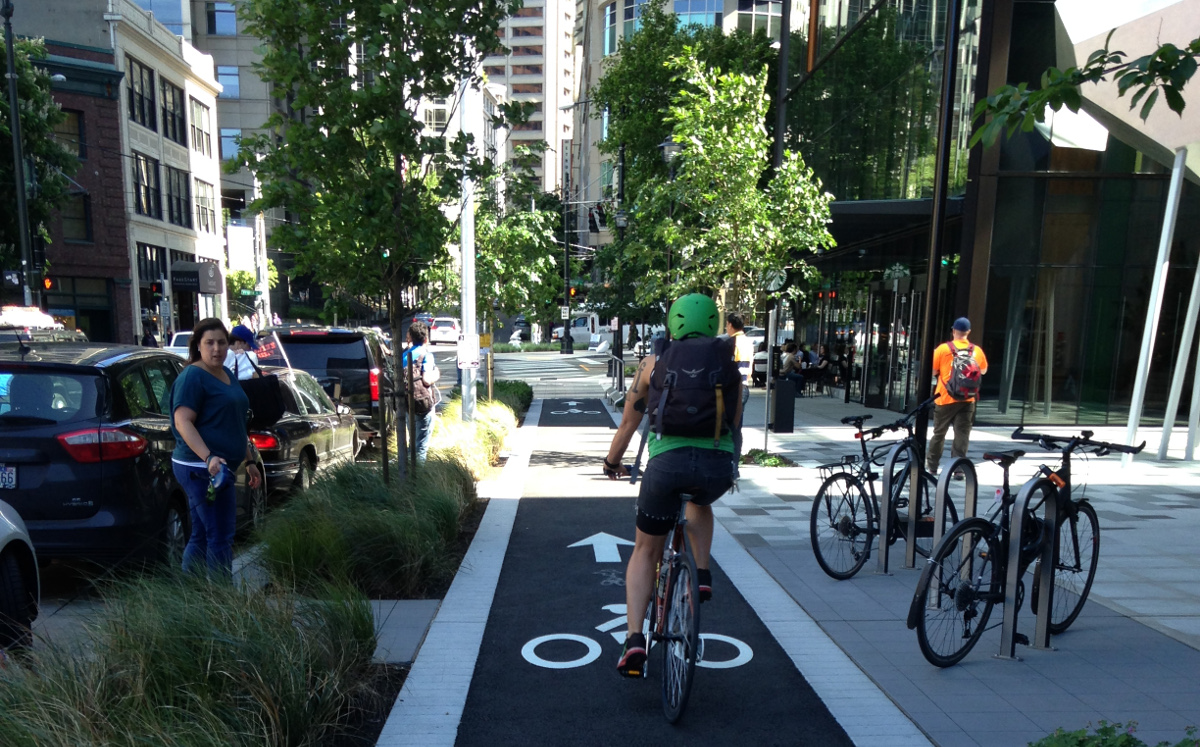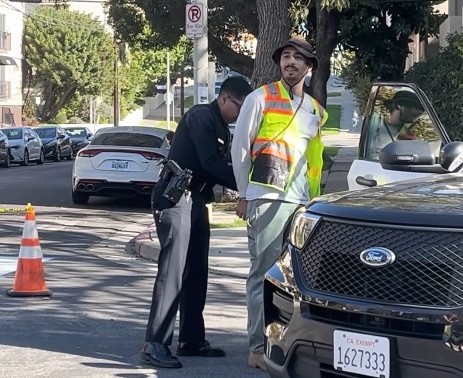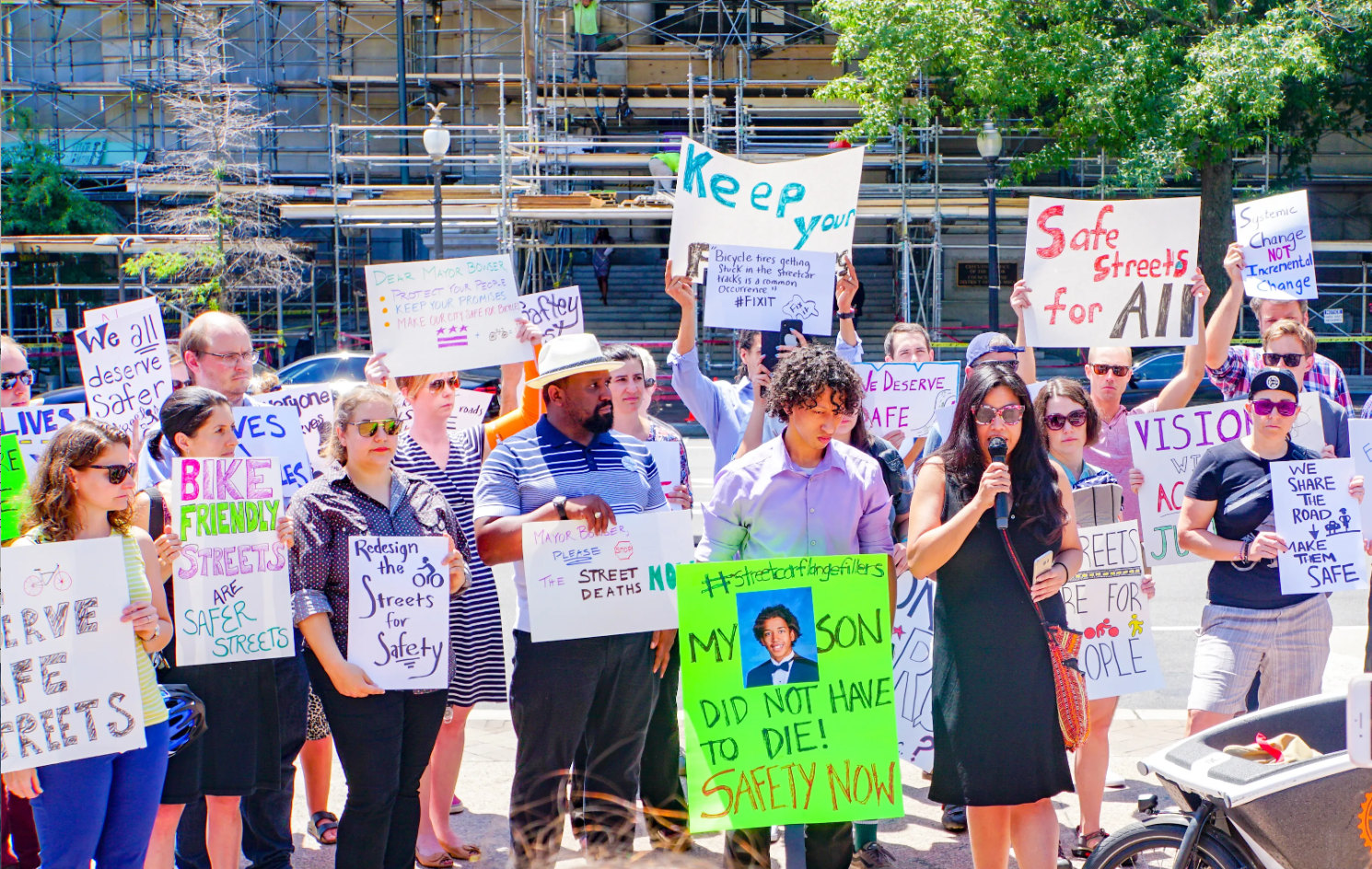There's good reason bicyclists feel safer inside bike lanes.
A new study by the University of Minnesota finds that drivers are less likely to pass cyclists at a dangerously close distance if there's a bike lane — particularly if the bike lane is physical separated from traffic.
The findings are rather intuitive, but it's still helpful to have hard data backing up the case for first-class on-street bike infrastructure.
A team of researchers used a bike-mounted radar and GoPro cameras to measure passing distance for 3,000 bike-car interactions on five types of streets: those with a buffered bike lane, a bollard-protected bike lane, no bike lane, just a shoulder, a standard bike lane and one configured as a bike boulevard.
Regardless of street design, very few drivers passed closer than three feet — but a majority of those close passes, 64 percent in fact, occurred on roads without bike lanes. And there were zero unsafe passings on roads with bollard-protected bike lanes or buffered bike lanes.
"[It's] evidence that investments in these types of bike facilities may reduce potentially risky interactions between vehicles and cyclists,” said Greg Lindsey, the University of Minnesota professor who co-authored the study.
Make that male cyclists. The study also found that drivers behaved more dangerously around female riders, passing, on average, three inches closer to female cyclists. Of all the unsafe passes in the study, 73 percent occurred against female cyclists. Studies show that women favor protected bike infrastructure because they tend to feel safer. Here's more evidence why.






